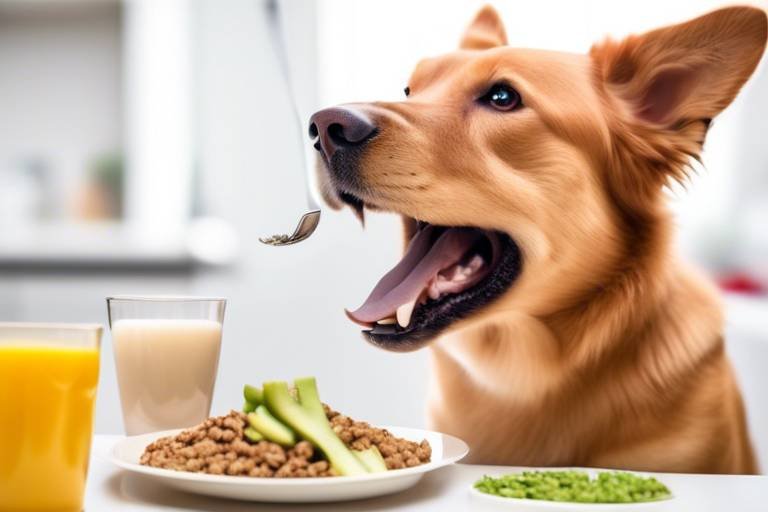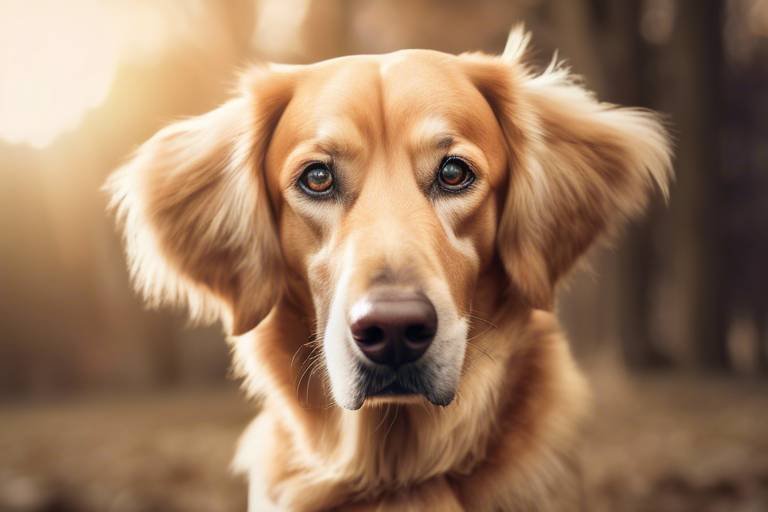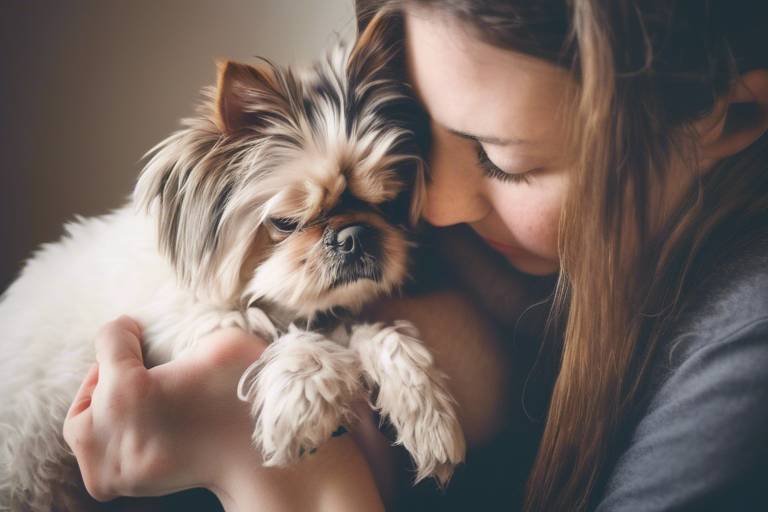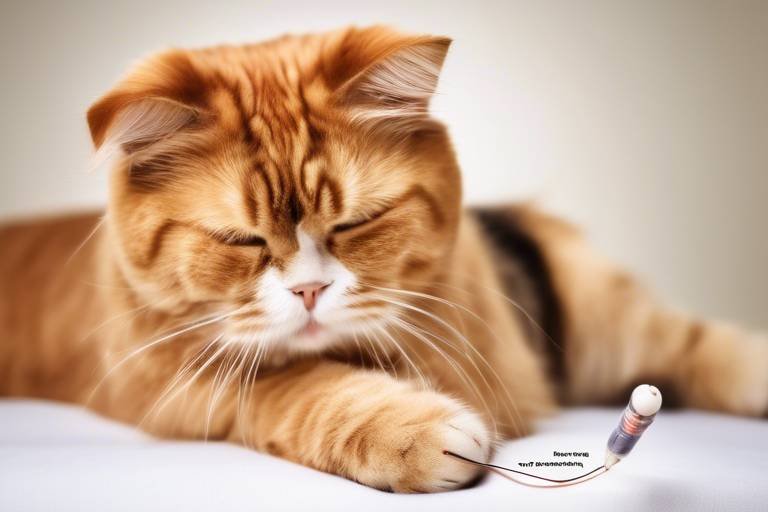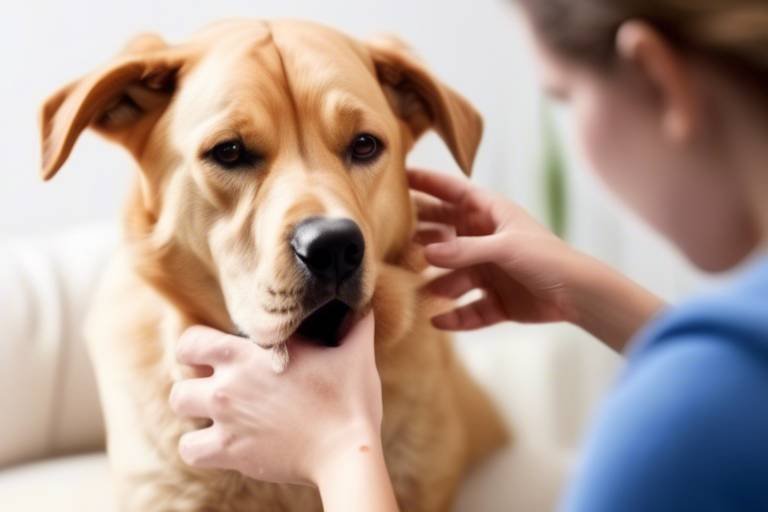Tips for Recognizing Signs of Aging in Pets
As pet owners, we often find ourselves caught up in the joy and excitement of our furry friends. However, just like us, our pets go through various stages of life, and aging is one of them. Recognizing the signs of aging in pets is crucial for ensuring they continue to live a happy and healthy life as they grow older. Have you ever noticed your pet slowing down during playtime or perhaps their coat isn’t as shiny as it used to be? These can be early indicators that your pet is aging. In this article, we’ll delve into the physical and behavioral changes to look out for, how to monitor their health, and the importance of regular veterinary check-ups. By being proactive, you can make sure your beloved companion receives the care they need during their golden years.
As pets age, they may exhibit various physical changes that can be quite noticeable. For instance, you might observe graying fur, particularly around the muzzle and eyes. This is similar to how humans get gray hair as they age, and it’s often a sign of wisdom and maturity. Additionally, you may notice weight fluctuations—some pets may gain weight due to decreased activity, while others may lose weight due to health issues. Another common physical change is reduced mobility; your pet may struggle to jump onto the couch or climb stairs like they used to. Recognizing these signs early can help in adjusting their care routines accordingly, ensuring they remain comfortable and happy.
Aging can lead to noticeable behavioral changes in pets that can be concerning for owners. For example, you might see your once playful pup becoming increasingly irritable or withdrawn. Have you noticed your cat hiding more often or sleeping longer than usual? These changes can indicate that your pet is experiencing discomfort or even cognitive decline. It's essential to pay attention to these shifts in behavior, as they can provide valuable insights into your pet's well-being.
Cognitive decline in pets can manifest in various ways, such as confusion, disorientation, or forgetfulness. Just like humans, pets can suffer from conditions similar to dementia. Understanding these symptoms is crucial for providing the necessary mental stimulation and appropriate interventions. For instance, engaging your pet with puzzle toys or interactive games can help keep their minds sharp, much like how we engage in brain exercises to maintain our cognitive abilities.
As pets age, they may struggle with remembering commands or familiar locations. This memory loss can impact their daily routines and interactions, requiring a bit more patience from their owners. Imagine your pet looking confused when they can’t find their favorite toy or seem unsure of where to go during walks. It’s essential to remain supportive and understanding, as your pet relies on you more than ever during this time.
An aging pet may become less social or more clingy, seeking comfort from their owners. You might find them following you around the house or wanting to cuddle more often. Recognizing these changes can help owners adapt their approach to meet their pet's emotional needs. Just as we seek comfort from loved ones during tough times, your pet may be looking for reassurance and love from you.
Monitoring physical health indicators such as dental health, skin condition, and appetite is vital for aging pets. These factors can reveal underlying health issues that may require veterinary attention. For instance, bad breath or difficulty eating could indicate dental problems, while changes in skin texture or excessive scratching might suggest allergies or skin conditions. Keeping a close eye on these indicators can help ensure your pet stays healthy and comfortable.
Frequent veterinary visits are essential for aging pets. Regular check-ups can help detect health problems early and ensure that your pet receives the necessary treatments and preventive care. Think of these visits as a health check-up for your furry friend, allowing you to catch any potential issues before they become serious. Your veterinarian can also provide valuable advice on how to manage your pet’s aging process, including dietary recommendations and exercise routines.
Keeping up with vaccinations and preventive measures is crucial for older pets. This helps protect them from diseases that can affect their already vulnerable immune systems. Just like humans, pets benefit from staying up-to-date on their vaccinations, which can prevent serious health issues down the line.
As pets age, their dietary needs may change significantly. Adjusting their diet to include senior-specific nutrition can help maintain their health and energy levels throughout their golden years. It’s important to consult with your veterinarian about the best food options for your aging pet, as they can recommend diets that are easier to digest and provide the necessary nutrients for their age.
- What are the first signs of aging in pets? Common signs include graying fur, decreased energy, and changes in appetite.
- How often should I take my aging pet to the vet? It’s recommended to have check-ups at least twice a year for older pets.
- Can I do anything to help my pet's cognitive decline? Yes! Engaging them in mental exercises and providing a stable routine can be beneficial.
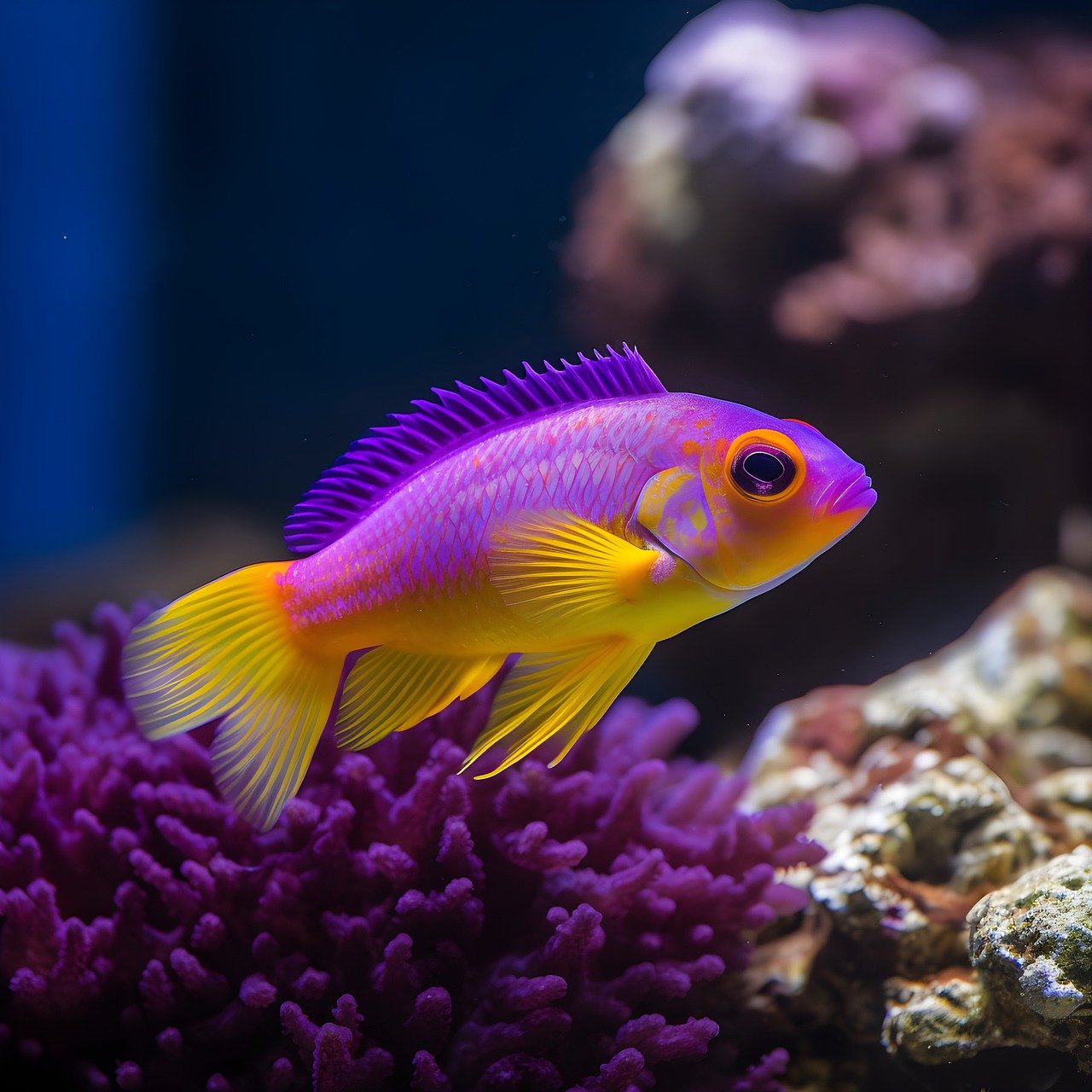
Physical Changes
This article provides essential insights into identifying the signs of aging in pets, helping owners ensure their furry companions receive the appropriate care and attention as they grow older.
As your beloved furry friend ages, you might start to notice some that can be both subtle and significant. These changes can include graying fur, which is often one of the first signs of aging. Just like humans, pets can develop gray hair as they grow older, and this can be particularly noticeable around their muzzle and eyes. Weight fluctuations are another common issue; older pets may become less active, leading to weight gain, or they may lose weight due to health problems or a decrease in appetite. It's essential to monitor these changes closely, as they can be indicators of your pet's overall health.
Additionally, reduced mobility is a major concern that pet owners should be aware of. You might find that your once-active dog is now reluctant to jump onto the couch or that your cat prefers to lounge around rather than engage in playful antics. This decrease in activity can be attributed to joint pain, arthritis, or other age-related conditions. Recognizing these signs early can help you make necessary adjustments to their care routine, such as incorporating gentle exercise or providing joint supplements.
Moreover, it's important to pay attention to your pet's grooming habits. As they age, some pets may neglect their grooming, leading to matted fur or poor skin condition. Regular brushing can help maintain their coat and skin health, allowing you to spot any abnormalities early on. Here’s a quick summary of the key physical changes to watch for:
- Graying Fur: Noticeable changes in fur color, especially around the face.
- Weight Changes: Fluctuations in weight due to decreased activity or underlying health issues.
- Reduced Mobility: Difficulty in jumping, climbing, or playing.
- Grooming Neglect: Changes in grooming habits that may require more attention.
By being vigilant about these physical changes, you can ensure that your pet receives the appropriate care and adjustments they need as they enter their golden years. Remember, early detection can make a significant difference in maintaining their quality of life.
Aging can lead to noticeable behavioral changes in pets. Increased irritability, withdrawal, or changes in sleep patterns may indicate that your pet is experiencing discomfort or cognitive decline.
Cognitive decline in pets can manifest as confusion, disorientation, or forgetfulness. Understanding these symptoms is crucial for providing mental stimulation and appropriate interventions.
Pets may struggle with remembering commands or familiar locations as they age. This memory loss can impact their daily routines and interactions, requiring patience from their owners.
An aging pet may become less social or more clingy, seeking comfort from their owners. Recognizing these changes can help owners adapt their approach to meet their pet's emotional needs.
Monitoring physical health indicators such as dental health, skin condition, and appetite is vital. These factors can reveal underlying health issues that may require veterinary attention.
Frequent veterinary visits are essential for aging pets. Regular check-ups can help detect health problems early and ensure that your pet receives the necessary treatments and preventive care.
Keeping up with vaccinations and preventive measures is crucial for older pets. This helps protect them from diseases that can affect their already vulnerable immune systems.
As pets age, their dietary needs may change. Adjusting their diet to include senior-specific nutrition can help maintain their health and energy levels throughout their golden years.
Q: How can I tell if my pet is in pain?
A: Look for signs such as changes in behavior, reluctance to move, or unusual vocalizations. If you suspect pain, consult your veterinarian.
Q: What should I feed my aging pet?
A: A diet formulated for senior pets is ideal as it addresses their specific nutritional needs.
Q: How often should I take my aging pet to the vet?
A: It's recommended to have check-ups at least twice a year for older pets to monitor their health closely.

Behavioral Shifts
As our beloved furry companions age, their behavior can change dramatically, often leaving us puzzled and concerned. Just like humans, pets can experience a wide range of behavioral shifts that may indicate they are facing challenges as they grow older. These changes can manifest in various ways, and being aware of them is crucial for ensuring that our pets continue to lead happy and healthy lives.
One of the most noticeable changes is an increase in irritability. You might find that your once playful pup is now more prone to snapping or growling when touched or approached. This could be a sign of physical discomfort or pain that they may not be able to communicate effectively. If you notice this shift, it’s essential to assess their physical health and consult a veterinarian if necessary. After all, just like us, pets can have bad days too, but persistent irritability could indicate something more serious.
Another significant behavioral shift is withdrawal. You may observe your pet becoming less interested in activities they once loved, such as playing fetch or going for long walks. Instead, they might prefer to curl up in their favorite spot and snooze the day away. This withdrawal can be a sign that they are feeling overwhelmed or uncomfortable in their surroundings. It’s vital to create a calm environment that allows them to feel safe and secure. Consider incorporating quiet time into their routine, providing them with a cozy space where they can retreat when they need a break.
Changes in sleep patterns are also common in aging pets. You might find that your pet sleeps more than they used to, or conversely, they may struggle to settle down at night. Just like humans, pets can suffer from insomnia or restlessness. If your pet seems to be pacing or appears anxious during the night, it may be time to reassess their bedtime routine. A warm, comfortable bed and a calming nighttime environment can work wonders for their sleep quality.
Cognitive decline is another aspect of aging that can significantly affect your pet's behavior. You might notice signs of confusion or disorientation, such as your pet getting lost in familiar spaces or staring blankly at walls. These symptoms can be distressing for both pets and their owners. Providing mental stimulation through interactive toys, puzzles, and training exercises can help keep their minds sharp. Think of it as a workout for their brain, just like we need to stay mentally active as we age.
Memory loss can be particularly challenging for pets. They may struggle to remember commands they once mastered or become disoriented in places they used to know well. This can impact their daily routines and interactions, making it essential for owners to exercise patience. Instead of getting frustrated, try using positive reinforcement to remind them of commands or redirect their attention when they seem confused.
Aging pets may also exhibit changes in how they interact with their owners and other pets. You might find that your once-social dog is now more clingy, seeking comfort from you more than ever. This behavior can be a sign that they are feeling vulnerable and need reassurance. On the flip side, some pets may become more solitary, preferring to spend time alone rather than engaging with family members. Understanding these changes can help you adapt your approach, ensuring that your pet feels loved and secure during this phase of their life.
- What are the common signs of aging in pets? Common signs include graying fur, weight changes, reduced energy, and alterations in behavior.
- How often should I take my aging pet to the vet? Regular check-ups every six months are recommended for aging pets to monitor their health closely.
- Can behavioral changes indicate pain in my pet? Yes, changes such as irritability or withdrawal can often signal discomfort or pain.
- What can I do to help my aging pet with cognitive decline? Engage them with mental stimulation activities, maintain a routine, and consult your vet for appropriate interventions.
Cognitive Decline
Cognitive decline in pets is a reality that many pet owners face as their furry friends grow older. Just like humans, pets can experience a gradual deterioration in their mental faculties, leading to confusion and disorientation. If you've noticed your once-vibrant pet becoming forgetful or seemingly lost in familiar surroundings, it might be time to take a closer look at their cognitive health. After all, our pets rely on us to recognize their needs and provide the support they require during this phase of life.
One of the most telling signs of cognitive decline is the change in your pet's behavior. You might observe that they are easily distracted, struggle to follow commands they once knew well, or even forget where their food or water bowls are located. This can be frustrating for both the pet and the owner, but it’s important to remember that these changes are not a reflection of your pet's love for you; rather, they indicate that their brain is undergoing changes that affect their daily functioning.
To help you identify cognitive decline in your pet, consider the following symptoms:
- Disorientation: Your pet may seem lost in their own home, wandering from room to room without purpose.
- Altered Sleep Patterns: Increased restlessness at night or excessive sleeping during the day can signal cognitive issues.
- Increased Anxiety: You might notice your pet becoming more anxious or agitated, especially when faced with changes in their environment.
- Less Interaction: If your pet has suddenly become less social, avoiding playtime or interaction with family members, it could be a sign of cognitive decline.
Understanding these symptoms is crucial for providing the right kind of support. Engaging your pet in mental stimulation activities can help slow down cognitive decline. Simple games like hide-and-seek, puzzle toys, or even basic training sessions can keep their minds sharp. Think of it as a workout for their brain—just like we need to exercise to maintain our mental health, our pets do too!
Moreover, regular veterinary check-ups are essential for monitoring your pet's cognitive health. Your vet can recommend specific tests to assess cognitive function and suggest appropriate interventions. There are even supplements and diets designed to support brain health in aging pets, so don’t hesitate to ask for advice. Remember, being proactive in recognizing and addressing cognitive decline can significantly enhance your pet's quality of life.
In conclusion, cognitive decline in pets is a challenging aspect of aging that requires our attention and compassion. By staying observant and adapting our care strategies, we can ensure that our beloved companions continue to enjoy their golden years with dignity and joy. After all, they’ve been there for us through thick and thin—it's only fair that we return the favor.
Q: How can I tell if my pet is experiencing cognitive decline?
A: Look for signs such as disorientation, changes in sleep patterns, increased anxiety, and decreased social interaction. If you notice these behaviors, it may be time to consult your veterinarian.
Q: Are there any specific activities that can help my pet's cognitive health?
A: Yes! Engage your pet with puzzle toys, training sessions, and interactive games. Regular mental stimulation can help keep their minds sharp.
Q: Should I change my pet's diet as they age?
A: Absolutely! Older pets often require diets that are specifically formulated for their age group to support their health and cognitive function. Consult your vet for recommendations.
Q: When should I take my pet to the vet for cognitive issues?
A: If you notice significant changes in your pet's behavior or cognitive function, it's best to schedule a vet appointment for a thorough evaluation.
Memory Loss
As our beloved pets age, one of the most concerning changes we might notice is . This can be particularly heartbreaking, as it affects their ability to recognize familiar faces, commands, and even their favorite spots in the house. Imagine your furry friend, who once darted to the door at the sound of your car, now standing confused, unsure of what to do. This forgetfulness can stem from various factors, including cognitive decline, which is akin to how humans experience memory issues as they age.
Memory loss in pets can manifest in several ways. For instance, they might forget basic commands they've known for years, like "sit" or "stay." This doesn't mean they don't love you or want to please you; it simply indicates that their brain is not processing information as it used to. You may also notice them getting lost in familiar surroundings, wandering aimlessly or staring blankly at walls. It's like watching a once vibrant movie turn into a faded photograph.
To help manage memory loss in your pet, consider incorporating some mental stimulation into their daily routine. Activities such as puzzle toys, scent games, or even simple training sessions can help keep their minds sharp. Additionally, maintaining a consistent routine can provide a sense of security, making it easier for them to navigate their day. Just like humans, pets thrive on familiarity, and a predictable environment can help ease their confusion.
Furthermore, be patient and understanding. Memory loss can lead to frustration, both for you and your pet. They may seem more anxious or clingy, seeking reassurance from you. This is a natural response to their fading memories, and your support is crucial during this time. Consider creating a safe space in your home where they can retreat when feeling overwhelmed. A cozy bed in a quiet corner can work wonders for their peace of mind.
In summary, recognizing the signs of memory loss in pets is essential for their well-being. By providing mental stimulation, maintaining routines, and offering comfort, you can help your furry friend navigate their golden years with a bit more ease and joy.
- What are the early signs of memory loss in pets? Early signs may include confusion, forgetfulness, and changes in behavior, such as increased clinginess or anxiety.
- Can memory loss in pets be treated? While there is no cure, mental stimulation and a supportive environment can help manage symptoms and improve their quality of life.
- How can I help my aging pet with memory loss? Engage them in activities that stimulate their mind, maintain a consistent routine, and provide a comforting environment.
Changes in Interaction
As our beloved pets age, their interaction patterns can undergo significant transformations. You might notice that your once playful pup or curious kitty has become more reserved, opting to lounge in their favorite spot rather than chase after toys. This shift can be puzzling for pet owners who are used to their furry companions being lively and engaged. One moment, they were the life of the party; the next, they seem to prefer solitude. It’s important to recognize that these changes are often a natural part of the aging process.
Some pets may become more clingy, seeking comfort and reassurance from their owners. This behavior can stem from a desire for security as they navigate the challenges of aging. Just like humans, pets may feel vulnerable and uncertain about their surroundings. On the other hand, some pets may withdraw, showing less interest in socializing with family members or other animals. This withdrawal can be a sign of discomfort or even pain, and it’s essential for owners to pay close attention to these behavioral shifts.
To better understand these changes, consider the following factors that may influence your pet’s interaction style:
- Health Issues: Chronic pain or illness can lead to decreased energy and a reluctance to engage in activities they once enjoyed.
- Cognitive Changes: Pets experiencing cognitive decline may become disoriented or forgetful, impacting their ability to interact normally.
- Emotional Needs: Aging pets may require more emotional support, leading them to seek out their owners for comfort.
Recognizing these changes is crucial for adapting your approach to meet your pet's emotional needs. For example, if your pet is more clingy, consider spending extra time with them, offering gentle affection and reassurance. On the flip side, if they seem withdrawn, try engaging them with their favorite toys or activities, but be patient and allow them to set the pace.
Ultimately, being attuned to your pet’s changing interaction style will not only strengthen your bond but also ensure that they feel secure and loved during their golden years. After all, a little extra understanding can go a long way in making their twilight years as comfortable and joyful as possible.
Q: How can I tell if my aging pet is in pain?
A: Look for signs such as decreased activity, changes in appetite, altered sleeping patterns, or unusual vocalizations. If you suspect pain, consult your veterinarian for guidance.
Q: Should I change my pet's diet as they age?
A: Yes, older pets often require a diet that caters to their specific nutritional needs. Consult your vet for recommendations on senior pet food.
Q: How often should I take my aging pet to the vet?
A: Regular check-ups are vital for aging pets. Aim for at least twice a year, or as recommended by your veterinarian, to monitor their health closely.
Physical Health Indicators
This article provides essential insights into identifying the signs of aging in pets, helping owners ensure their furry companions receive the appropriate care and attention as they grow older.
As pets age, they may exhibit various physical changes such as graying fur, weight fluctuations, and reduced mobility. Recognizing these signs early can help in adjusting their care routines accordingly.
Aging can lead to noticeable behavioral changes in pets. Increased irritability, withdrawal, or changes in sleep patterns may indicate that your pet is experiencing discomfort or cognitive decline.
Cognitive decline in pets can manifest as confusion, disorientation, or forgetfulness. Understanding these symptoms is crucial for providing mental stimulation and appropriate interventions.
Pets may struggle with remembering commands or familiar locations as they age. This memory loss can impact their daily routines and interactions, requiring patience from their owners.
An aging pet may become less social or more clingy, seeking comfort from their owners. Recognizing these changes can help owners adapt their approach to meet their pet's emotional needs.
Monitoring physical health indicators is vital for ensuring your pet's well-being as they age. Just like humans, pets can experience a variety of health issues that may not be immediately visible. One of the first things to look out for is dental health. Bad breath, loose teeth, or excessive drooling can indicate dental diseases that may cause pain or discomfort. Additionally, observing your pet's skin condition is equally important; dry, flaky skin or excessive scratching can be signs of allergies or skin infections. Furthermore, a sudden change in appetite—whether it’s a decrease or increase—can be a red flag for underlying health issues.
Here’s a quick overview of some key physical health indicators to monitor:
| Indicator | What to Look For | Possible Implications |
|---|---|---|
| Dental Health | Bad breath, loose teeth, excessive drooling | Dental disease, pain |
| Skin Condition | Dry, flaky skin, excessive scratching | Allergies, infections |
| Appetite | Sudden increase or decrease in eating habits | Underlying health issues |
By keeping a close eye on these indicators, you can catch potential health issues before they escalate. Regular check-ups with your veterinarian can also aid in identifying problems early, ensuring your pet remains healthy and happy in their golden years.
Frequent veterinary visits are essential for aging pets. Regular check-ups can help detect health problems early and ensure that your pet receives the necessary treatments and preventive care.
Keeping up with vaccinations and preventive measures is crucial for older pets. This helps protect them from diseases that can affect their already vulnerable immune systems.
As pets age, their dietary needs may change. Adjusting their diet to include senior-specific nutrition can help maintain their health and energy levels throughout their golden years.
- What are the first signs of aging in pets? Common early signs include graying fur, reduced energy levels, and changes in appetite.
- How often should I take my aging pet to the vet? It's recommended to schedule check-ups at least twice a year for senior pets.
- Are there specific diets for aging pets? Yes, senior pet foods are formulated to meet the unique nutritional needs of older animals.
- How can I keep my aging pet mentally stimulated? Engage them with interactive toys, puzzles, and regular training sessions to keep their minds sharp.
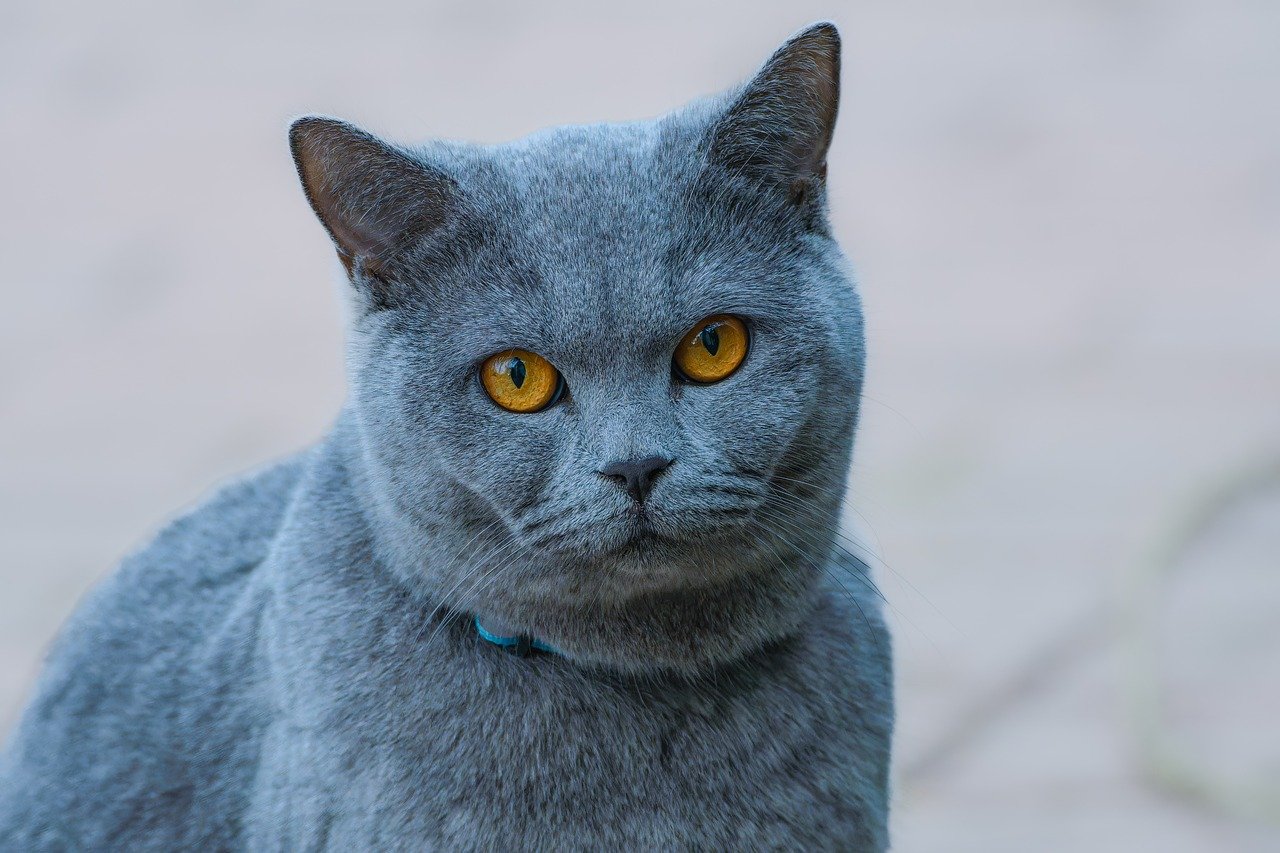
Regular Veterinary Check-ups
This article provides essential insights into identifying the signs of aging in pets, helping owners ensure their furry companions receive the appropriate care and attention as they grow older.
As pets age, they may exhibit various physical changes such as graying fur, weight fluctuations, and reduced mobility. Recognizing these signs early can help in adjusting their care routines accordingly.
Aging can lead to noticeable behavioral changes in pets. Increased irritability, withdrawal, or changes in sleep patterns may indicate that your pet is experiencing discomfort or cognitive decline.
Cognitive decline in pets can manifest as confusion, disorientation, or forgetfulness. Understanding these symptoms is crucial for providing mental stimulation and appropriate interventions.
Pets may struggle with remembering commands or familiar locations as they age. This memory loss can impact their daily routines and interactions, requiring patience from their owners.
An aging pet may become less social or more clingy, seeking comfort from their owners. Recognizing these changes can help owners adapt their approach to meet their pet's emotional needs.
Monitoring physical health indicators such as dental health, skin condition, and appetite is vital. These factors can reveal underlying health issues that may require veterinary attention.
Frequent veterinary visits are essential for aging pets. Just like humans, pets need regular check-ups to catch potential health issues before they become serious. A simple visit to the vet can be the difference between a happy, healthy pet and one that suffers from preventable ailments. During these visits, your veterinarian can perform essential examinations that may include:
- Physical Examinations: Regular check-ups allow for a thorough physical examination, which can help identify any physical changes that may require attention.
- Blood Tests: Routine blood tests can help monitor organ function and detect any underlying health issues early on.
- Weight Monitoring: Keeping track of your pet's weight is crucial as obesity can lead to a host of health problems.
Additionally, regular visits help ensure that your pet is up to date on vaccinations and preventive care. Vaccinations are particularly important for older pets, whose immune systems may not be as strong as they once were. Your vet can recommend a vaccination schedule that is appropriate for your pet's age and health status.
Moreover, these check-ups provide an excellent opportunity for you to discuss any behavioral or physical changes you've noticed at home. Your vet can guide you on how to manage these changes effectively, ensuring your pet remains comfortable and healthy as they age. Remember, the earlier you catch a potential issue, the better the chances of successful treatment.
Keeping up with vaccinations and preventive measures is crucial for older pets. This helps protect them from diseases that can affect their already vulnerable immune systems.
As pets age, their dietary needs may change. Adjusting their diet to include senior-specific nutrition can help maintain their health and energy levels throughout their golden years.
Q: How often should I take my aging pet to the vet?
A: It's generally recommended to take your aging pet for check-ups at least twice a year. However, if your pet has specific health issues, your vet may suggest more frequent visits.
Q: What signs should I look for that indicate my pet needs to see a vet?
A: Look for changes in behavior, appetite, weight, or mobility. If your pet seems lethargic, has difficulty standing, or shows signs of pain, it's time to consult your vet.
Q: Can I manage my pet's health at home?
A: While you can monitor your pet's health at home by observing their behavior and physical condition, regular veterinary check-ups are essential for professional assessment and intervention.
Vaccinations and Preventive Care
As our beloved pets grow older, their immune systems may weaken, making them more susceptible to various diseases. This is why keeping up with vaccinations and preventive care is crucial during their senior years. Regular vaccinations not only protect against common ailments but also help to ensure that your pet enjoys a longer, healthier life. Think of vaccinations as a shield; they provide a layer of defense against illnesses that can be particularly severe in older animals.
It’s essential to consult with your veterinarian to create a tailored vaccination schedule based on your pet's age, health status, and lifestyle. For example, if your pet spends time outdoors or interacts with other animals, they may need more frequent vaccinations. Additionally, some vaccines are considered core, meaning they are recommended for all pets, while others are non-core and may be given based on specific risk factors.
In addition to vaccinations, preventive care includes regular health screenings and check-ups. These visits allow your veterinarian to monitor your pet's health and catch any potential issues early. During these check-ups, your vet may perform various tests, such as blood work or urinalysis, to assess kidney function, liver health, and other vital parameters. Early detection of health problems can significantly improve treatment outcomes, so don’t overlook these important appointments!
Moreover, preventive care extends beyond vaccinations and check-ups. Maintaining a healthy lifestyle for your aging pet is paramount. This includes providing a balanced diet rich in nutrients, ensuring they get regular exercise appropriate for their age, and keeping their weight in check. Obesity can lead to numerous health issues, including diabetes and joint problems, which can be particularly challenging for older pets.
In summary, keeping your pet up to date with vaccinations and preventive care is vital in their golden years. By staying proactive, you can help ensure that your furry friend remains healthy, happy, and full of life for as long as possible. After all, your pet relies on you to make the right decisions for their health, so why not give them the best chance at a vibrant, joyful life?
- How often should my aging pet see the vet?
It's recommended that senior pets visit the veterinarian at least every six months for check-ups and vaccinations. - What vaccinations are essential for older pets?
Core vaccinations such as rabies, distemper, and parvovirus are essential, while non-core vaccinations depend on your pet's lifestyle and risk factors. - Can my pet still receive vaccinations if they have health issues?
In many cases, yes. However, it’s crucial to discuss your pet’s specific health concerns with your veterinarian to determine the best course of action. - What other preventive measures should I consider for my aging pet?
Along with vaccinations, consider regular dental care, weight management, and providing mental stimulation through toys and activities.
Dietary Adjustments
As our beloved pets age, their dietary needs undergo significant changes. Just like humans, older pets may require a specialized diet to maintain their health and vitality. This is not just about keeping them full; it’s about ensuring they receive the right nutrients to support their aging bodies. For instance, senior pets often need lower calories to prevent obesity, which can lead to a host of health issues. Additionally, their metabolism slows down, making it crucial to adjust their food intake accordingly.
One of the most important adjustments is to incorporate high-quality protein in their meals. Proteins are essential for maintaining muscle mass, which tends to decline as pets grow older. Look for pet foods that list real meat as the first ingredient, as this ensures your furry friend is getting the nutrition they need. Furthermore, consider adding omega-3 fatty acids to their diet, which can help support joint health and reduce inflammation. Fish oil or flaxseed oil can be great sources of these beneficial fats.
Moreover, hydration becomes even more critical as pets age. Older pets may not drink enough water, leading to dehydration and potential kidney issues. To combat this, you might want to include wet food in their diet, as it contains more moisture than dry kibble. This can help keep your pet hydrated while also making mealtime more enjoyable for them. If you’re feeding dry food, ensure fresh water is always available and consider adding water or broth to their meals to encourage drinking.
It’s also essential to monitor your pet's digestive health. Aging pets can be more susceptible to digestive issues, so incorporating fiber-rich foods can help maintain healthy digestion. Look for ingredients like pumpkin or sweet potatoes, which are excellent sources of fiber. Additionally, probiotics can be beneficial in promoting gut health and improving nutrient absorption.
Lastly, it’s always wise to consult with your veterinarian before making any significant dietary changes. They can provide personalized recommendations based on your pet’s specific health needs, age, and lifestyle. Remember, a well-balanced diet is a cornerstone of your pet’s health in their golden years. By making these dietary adjustments, you’re not just feeding them; you’re investing in their overall well-being and happiness.
- What are the signs that my pet needs a dietary change? Look for weight gain, lethargy, changes in appetite, or digestive issues.
- Can I feed my senior pet human food? Some human foods are safe, but always check with your vet before introducing new foods.
- How often should I feed my older pet? It’s generally recommended to feed them smaller, more frequent meals throughout the day.
- What should I avoid feeding my aging pet? Avoid foods high in fat, sugar, and artificial additives, as well as bones that can splinter.
Frequently Asked Questions
- What are the common physical signs of aging in pets?
As pets grow older, you might notice a few telltale signs. These can include graying fur, especially around the muzzle, weight changes, and a noticeable reduction in their mobility. Just like us, pets can also develop arthritis or other joint issues, making it harder for them to jump or play like they used to.
- How can I tell if my pet is experiencing cognitive decline?
Cognitive decline in pets can be tricky to spot. Look for signs like confusion, disorientation, or forgetfulness about commands or familiar places. If your pet seems to be staring at walls or getting lost in the house, it might be time to consult your vet for advice on how to help them.
- What behavioral changes should I be aware of in aging pets?
Behavioral shifts can be quite pronounced in older pets. You may notice them becoming more irritable, withdrawing from social interactions, or changing their sleep patterns. If your once-active furry friend is now more of a couch potato, it could be a sign of discomfort or even pain.
- How often should I take my aging pet to the vet?
Regular veterinary check-ups are crucial for aging pets. Ideally, you should schedule visits at least twice a year. This way, any health issues can be caught early, and your vet can provide the necessary preventive care to keep your pet feeling their best.
- Are there specific dietary changes I should make for my senior pet?
Absolutely! As pets age, their nutritional needs change. It's important to switch to senior-specific diets that cater to their unique health requirements. These diets often include lower calories, higher fiber, and essential nutrients to help maintain their health and energy levels.
- What preventive care should I consider for older pets?
Keeping up with vaccinations and preventive care is essential for older pets. Their immune systems can weaken with age, making them more susceptible to diseases. Regular vaccinations and preventive treatments can help protect them from illnesses that could significantly impact their quality of life.



